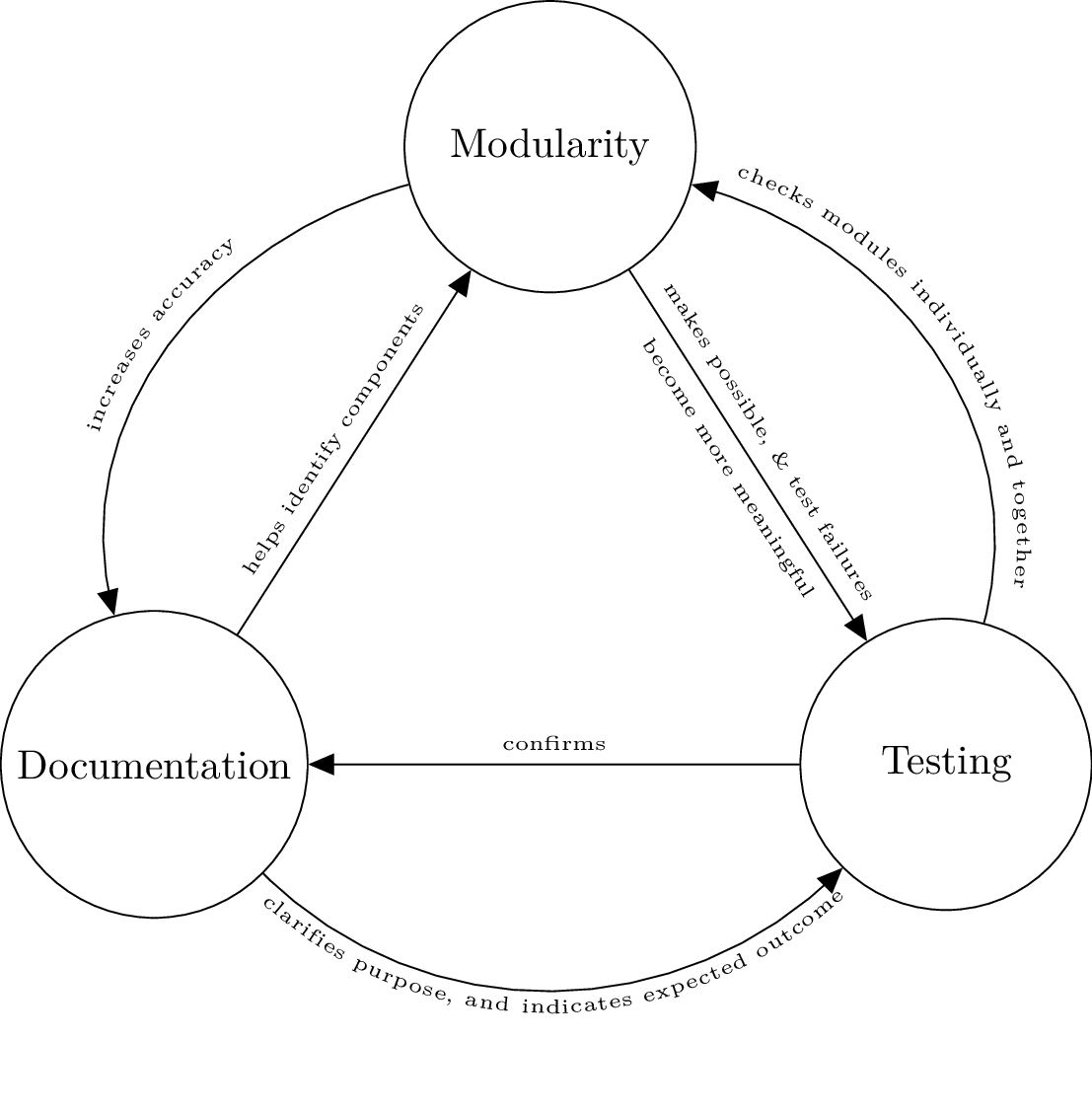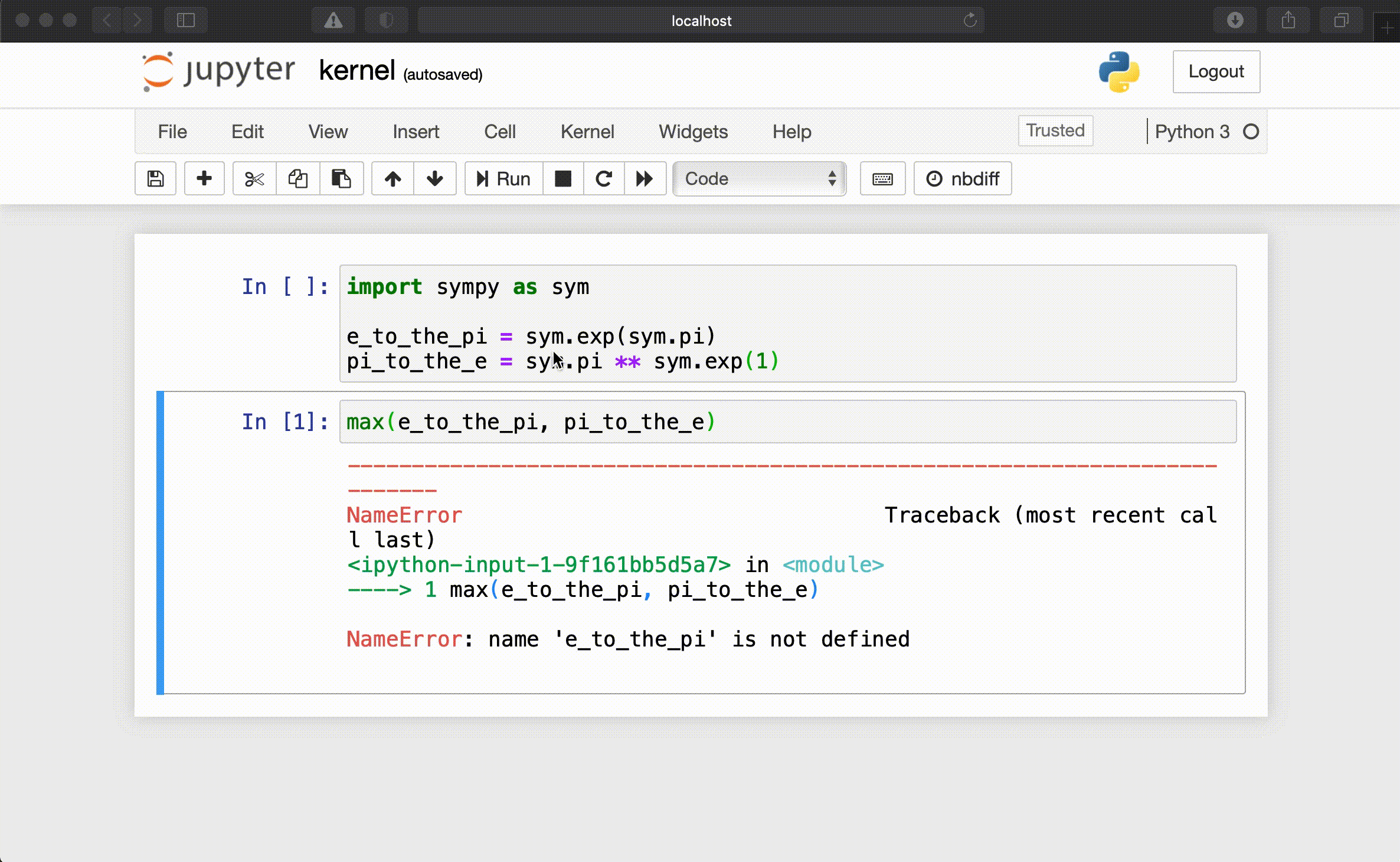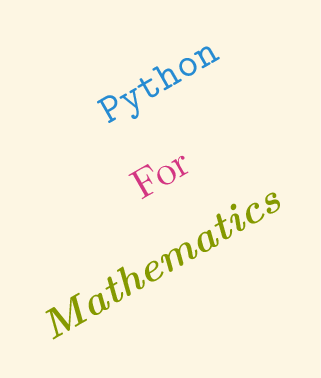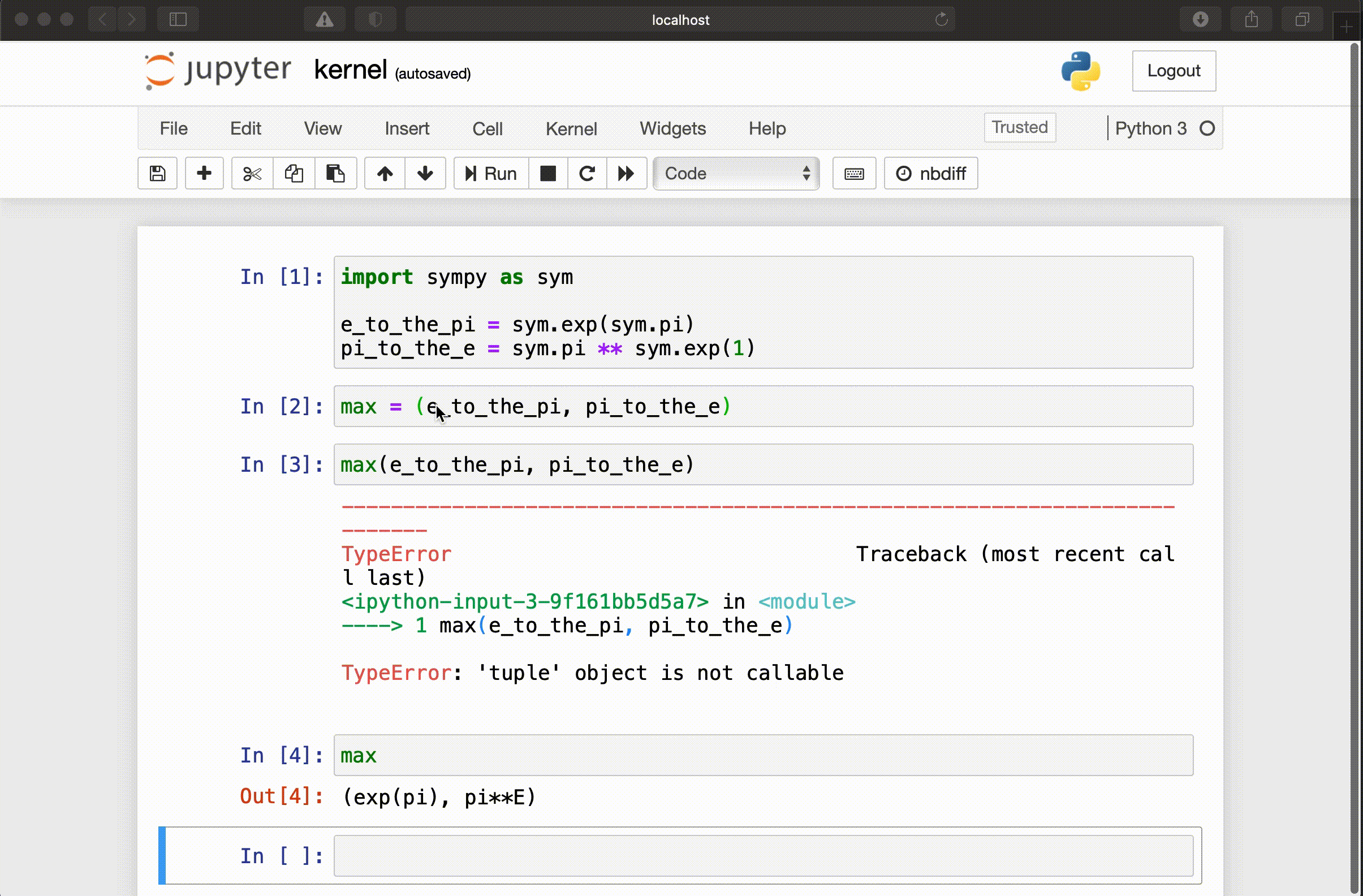Tutorial
Contents
Tutorial#
We are going to illustrate what a kernel does by letting python solve the following problem:
Solving the problem#
Problem
What is the maximum of \(e^{\pi}\) or \(\pi ^ e\)?
We start by creating variables and assigning them to have the value of the two numbers we want to compare:
import sympy as sym
e_to_the_pi = sym.exp(sym.pi)
pi_to_the_e = sym.pi ** sym.exp(1)
We now compute the maximum using Python’s max tool:
max(e_to_the_pi, pi_to_the_e)
Making mistakes#
For the rest of this tutorial we will make common mistakes when interactively running code and show how to fix them.
Undefined variables#
Consider the common mistake of not running the first cell:
import sympy as sym
e_to_the_pi = sym.exp(sym.pi)
pi_to_the_e = sym.pi ** sym.exp(1)
Running the second cell:
max(e_to_the_pi, pi_to_the_e)
Figure Getting a name error when not running a cell shows the error that would occur:

Fig. 27 Getting a name error when not running a cell#
The error message is specifically telling us that the command max(e_to_the_pi, pi_to_the_e) cannot be run because e_to_the_pi is not known.
To fix this we return the first cell and run it before running the second cell again. This is shown in Figure Rerunning the first cell to properly define all needed variables.

Fig. 28 Rerunning the first cell to properly define all needed variables#
Attention
This approach is sometimes going to be necessary even if we run the first cell but perhaps we had an error (a typo for example) in it at the time. In which case, we fix the typo and run it again before running the second cell.
Overwriting a tool#
Another common mistake is to run some code that might not be the code that was required. At times this can be overcome by correcting the mistake but on other occasions the code that was run might override and essentially delete something necessary.
As an example consider if the first cell was run correctly:
import sympy as sym
e_to_the_pi = sym.exp(sym.pi)
pi_to_the_e = sym.pi ** sym.exp(1)
However the second cell was run with an error (not max = (…) as opposed
to max(…)):
max = (e_to_the_pi, pi_to_the_e)
Figure Getting a type error when the max function has been overwritten shows the error that would occur after running the correct code:

Fig. 29 Getting a type error when the max function has been overwritten#
As Figure Getting a type error when the max function has been overwritten shows the error is
due to the fact that the max tool has been overwritten to be a tuple
containing the two variables.
To fix this we need to Restart the Kernel which allows us to forget the
outcome of all code that has been run and start from again. To restart the
kernel: click on Kernel and then Restart.
After doing this we can run the correct code as shown in Figure Restarting the kernel and running the code again..

Fig. 30 Restarting the kernel and running the code again.#
Important
In this tutorial we have
Seen how to rerun a cell if it is needed.
Seen how to restart a kernel if it is needed.

